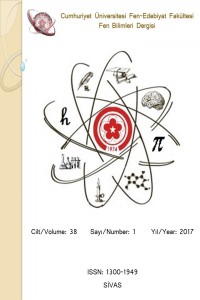Evaluating the Production of Doubled Haploid Wheat Lines Using Various Methods of Wheat and Maize Crossing to Develop Heat-Tolerant Wheat Varieties
Öz
Abstract. In this study, chromosome elimination method was used to develop doubled haploid wheat lines via crosses with maize. The plant materials used included 11, F1 wheat genotypes and maize genotype BC572. In these crosses, the maize plant was used as the male parent.Three methods of haploid production in wheat comprising conventional (A), detached-tiller culture (B) and intermediate (C) techniques were used and compared. The traits such as the number of seeds set, the number of embryos obtained and the number of haploid seedlings produced were studied. Comparisons showed that among various methods of storing wheat spikes, method (C) was better than other techniques in terms of the percentage of seed production, embryo formation and haploid seedling production. Also, in all three methods, the percentage of seed production, the percentage of embryo formation and the percentage of haploid seedling production were respectively equal to 76.84, 25.22 and 51.89. Among the wheat genotypes in all three methods, genotype DH-133 with 87.28 percent seed set and genotype DH-132 with 32.71 percent embryo formation and 65.08 percent haploid seedling production were the best genotypes. A total of 92 doubled haploid lines were produced. In the field evaluations of 86 doubled haploid lines, traits such as growing season, plant height, lodging, kernel yield and 1000 kernel weight were examined. Finally, 3 lines were selected for adaptation and stability testing under heat stress conditions.
Keywords: Wheat, Doubled haploid, Chromosome elimination, Detached-tiller culture
Özet. Bu çalışmada, mısır ile çaprazlarla çift katlı haploid buğday hatlarının geliştirilmesi için kromozom eliminasyon yöntemi kullanılmıştır. Kullanılan bitki materyalleri 11, F1 buğday genotipleri ve BC572 mısır genotipini içermektedir. Bu çaprazlarda, mısır bitkisi erkek ebeveyn olarak kullanılmıştır. Geleneksel (A), ayrık-yeke kültürü (B) ve ara (C) tekniklerinden oluşan buğdayda haploid üretiminin üç yöntemi kullanılmış ve karşılaştırılmıştır. Elde edilen tohum sayısı, elde edilen embriyo sayısı ve üretilen haploid fideler sayısı gibi özellikler araştırılmıştır. Karşılaştırmalar, buğday sivrilerini muhafaza etmenin çeşitli yöntemleri arasında tohum üretim yüzdesi, embriyo oluşumu ve haploid fide üretimi açısından (C) metodunun diğer tekniklerden daha iyi olduğunu göstermiştir. Ayrıca, her üç yöntemde, tohum üretim yüzdesi, embriyo oluşum yüzdesi ve haploid fide üretimi yüzdesi sırasıyla 76,84, 25,22 ve 51,89'e eşittir. Her üç yöntemdeki buğday genotipleri arasında,% 87.28 tohumluk seti olan DH-133 genotipi % 32,71 yüzdesiyle embriyo oluşumu ve % 65,08 haploid fide üretimi olan DH-132 genotipi en iyi genotiplerdir. Toplam 92 katlanmış haploid çizgi üretilmiştir. 86 çift haploid hattının değerlendirilmesinde, yetiştirme mevsimi, bitki boyu, barınma, çekirdek verimi ve 1000 çekirdek ağırlığı gibi özellikler incelenmiştir. Son olarak, ısı stres koşulları altında adaptasyon ve stabilite testi için 3 hat seçilmiştir.
Anahtar kelimeler: Buğday, Çift katlı haploid, Kromozom eliminasyonu, Müstakil yeke kültürü
Ayrıntılar
| Bölüm | Fen Bilimleri Makalesi |
|---|---|
| Yazarlar | |
| Yayımlanma Tarihi | 17 Şubat 2017 |
| Yayımlandığı Sayı | Yıl 2017 Cilt: 38 Sayı: 1 |


